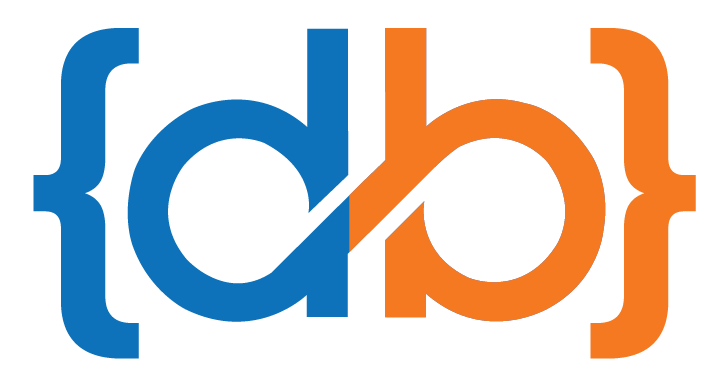
As an ethical hacker, mastering advanced exploitation techniques is not just beneficial; it’s necessary for staying ahead in the ever-evolving cybersecurity landscape. In this blog post, I will guide you through the most dangerous vulnerabilities that threaten modern systems and explore how you can leverage these techniques to strengthen your security posture. By understanding the intricacies of these methods, you empower yourself to identify weaknesses and drive positive change within your organization. Let’s explore these sophisticated tactics and enhance your skills as an ethical hacker.
Understanding Advanced Exploitation Techniques
A thorough grasp of advanced exploitation techniques enables ethical hackers to assess and expose vulnerabilities in security systems. By mastering these skills, you can enhance your penetration testing capabilities and uncover potential flaws before malicious actors do. Below are some key areas of focus:
- Framework exploitation
- Zero-day vulnerabilities
- Advanced social engineering
- Privilege escalation
- Post-exploitation techniques
| Technique | Description |
| Framework Exploitation | Utilizing established frameworks to uncover weaknesses in systems. |
| Zero-Day Vulnerabilities | Exploiting unknown vulnerabilities that haven’t been patched. |
| Social Engineering | Manipulating human behavior to gain access to sensitive information. |
| Privilege Escalation | Gaining elevated access to resources that should be protected. |
| Post-Exploitation | Techniques used after gaining access to gather intelligence. |
Overview of Exploitation Phases
About each phase of exploitation, I must emphasize that understanding the process is critical for detecting and mitigating potential threats. The phases typically include reconnaissance, scanning, gaining access, maintaining access, and clearing tracks. Mastering these stages equips you to conduct a thorough assessment of vulnerabilities and strengths in a security system.
Importance of Ethical Hacking in Cybersecurity
Cybersecurity professionals play a vital role in safeguarding enterprises from cyber threats. Ethical hackers proactively identify weaknesses and help organizations fortify their defenses, mitigating risks before they become crises. By engaging in ethical hacking practices, you pave the way for robust security posture and instill confidence in security measures.
Overview of the importance of ethical hacking is evident in the increasing sophistication of cyber attacks today. As an ethical hacker, your mission is not just to find vulnerabilities but also to help organizations understand and defend against them. By cloning the methodologies of malicious hackers, I ensure that your approaches are effective, responsive, and respectful of legal boundaries. Such practices contribute to a safer digital environment, allowing organizations to operate securely and with peace of mind.
Advanced Penetration Testing Strategies
It is vital for ethical hackers to adopt advanced penetration testing strategies to enhance the effectiveness of their assessments. To achieve high success rates, I often employ the following methods:
- Reconnaissance and Footprinting
- Vulnerability Scanning
- Exploitation Techniques
- Post-Exploitation Measures
- Reporting and Remediation
| Strategy | Description |
| Reconnaissance | Gathering information about the target |
| Vulnerability Scanning | Identifying weaknesses in systems |
| Exploitation | Gaining unauthorized access |
| Post-Exploitation | Maintaining access and data analysis |
| Reporting | Documenting findings for remediation |
Social Engineering Techniques
Social engineering involves manipulating individuals to gain confidential information. I often utilize techniques like phishing, pretexting, and baiting to exploit human psychology and weaknesses, thus opening doors that technical measures cannot breach. Understanding how to engage people effectively is a skill every ethical hacker should master.
Bypassing Security Controls
Between various security measures, I often find myself needing to bypass controls that are in place to protect sensitive data. Techniques such as exploiting misconfigurations or leveraging social engineering tactics can be effective in these scenarios.
Hence, to successfully bypass security controls, I focus on examining their weak points and leveraging my knowledge of social engineering and technical exploits. Understanding the human element in security is vital; often, it’s the weakest link that defenders overlook. By using advanced strategies, I can pinpoint where organizations might suffer from misconfigurations or lack of awareness, allowing for a more comprehensive penetration test and ultimately leading to stronger defenses.
Exploit Development Fundamentals
Now that we have established a baseline understanding of ethical hacking, it’s vital to look into the core principles of exploit development. This knowledge allows you to analyze vulnerabilities effectively, understand system behaviors, and craft custom exploits tailored to specific security flaws. By mastering these fundamentals, you can navigate the intricate landscape of software and network vulnerabilities with confidence, preparing yourself for more advanced techniques in ethical hacking.
Vulnerability Analysis
By focusing on vulnerability analysis, I can systematically identify weaknesses in software systems. This process involves utilizing tools and techniques to assess the security posture of applications, networks, and devices. I prioritize understanding the context of vulnerabilities to evaluate their potential impact, allowing for better-targeted exploitation strategies.
Crafting Custom Exploits
Vulnerability analysis serves as the precursor to crafting custom exploits tailored for specific weaknesses. This stage involves transforming theoretical knowledge into practical application, where I must understand the underlying architecture and behavior of the target system. Using tools such as debuggers and disassemblers, I can pinpoint vulnerable code paths and develop exploit payloads that execute arbitrary commands or escalate privileges. This tailored approach not only increases the chance of success but also enhances the educational aspect of the process, giving me deeper insights into the software’s inner workings.
In addition, crafting custom exploits requires a creative mindset and a strong understanding of programming languages as well as system internals. I explore various methodologies such as buffer overflows, race conditions, and injection attacks, tailoring my exploits to interact with the target environment effectively. The ability to customize exploits can mean the difference between a successful test and a failed attempt, reinforcing the necessity of thorough research, analysis, and testing. Ultimately, these custom solutions contribute to the greater good of cybersecurity by revealing and addressing vulnerabilities before they can be exploited by malicious actors.
Web Application Exploitation
After understanding the basics of web security, I can investigate advanced techniques that ethical hackers use to exploit vulnerabilities in web applications. This chapter explores various methods to identify and exploit weaknesses, enhancing your skills in securing web platforms. My aim is to equip you with the tools necessary for safeguarding applications against malicious attacks while adhering to ethical standards.
SQL Injection Revisited
Against a backdrop of increasing cyber threats, I emphasize the significance of SQL Injection as a persistent vulnerability in web applications. By leveraging this technique, ethical hackers can manipulate backend databases through flawed query handling, exposing sensitive data. Strengthening your understanding of SQL Injection enables you to better protect your applications from such attacks.
Cross-Site Scripting (XSS) Techniques
Against the rising sophistication of web application attacks, I explore Cross-Site Scripting (XSS) techniques that expose vulnerabilities allowing attackers to inject malicious scripts. Detecting XSS flaws in your web applications is pivotal in preventing attackers from executing harmful actions in a victim’s browser.
CrossSite Scripting (XSS) is a potent technique where I can inject malicious scripts into web pages viewed by other users. By exploiting this vulnerability, attackers can capture sensitive information, such as cookies and session tokens, or even redirect users to harmful sites. Understanding the different types of XSS, such as reflected, stored, and DOM-based, allows me to implement effective defenses against these attacks, thereby ensuring robust security for your web applications.
Wireless and Network Exploits
Keep in mind that wireless networks are prime targets for attacks. As an ethical hacker, you must understand the vulnerabilities inherent in Wi-Fi connections and how to exploit them to enhance security measures. Emphasizing a robust approach to network security can not only safeguard your client’s data but also fortify their operational integrity against malicious hackers.
Assessing Wireless Networks
Beside evaluating the security of wired networks, I frequently assess wireless networks to identify weaknesses that could jeopardize sensitive information. I focus on authentication methods, encryption standards, and potential rogue access points. By systematically analyzing these elements, I can provide recommendations that significantly improve the security posture of wireless infrastructures.
Network Protocol Vulnerabilities
Networks are constantly exposed to various vulnerabilities due to flawed protocol implementations. As I dive deeper into network protocols, I pay close attention to how they handle data transmission and authentication. Understanding the weaknesses in protocols like TCP/IP, HTTP, and DNS can reveal opportunities for exploitation, enabling unauthorized access or data interception.
At my core, I understand that many network protocol vulnerabilities are caused by outdated or unpatched software, allowing attackers to execute a range of exploits, from Denial of Service (DoS) to man-in-the-middle attacks. By staying informed about these vulnerabilities, you can enhance your defense strategies and conduct comprehensive security assessments. Prioritizing the identification and remediation of these weaknesses can dramatically reduce risks and establish a more resilient network architecture.
Post-Exploitation Tactics
Once again, after successfully exploiting a vulnerability, ethical hackers must pivot towards post-exploitation tactics to ensure their efforts yield the desired results. This phase is crucial for gathering intelligence and maintaining persistence within the network. For further insights into these techniques, refer to my article on Advanced Exploitation Techniques with Kali Linux.
Maintaining Access
An ethical hacker needs to establish reliable methods to maintain access to a compromised system. This can involve installing backdoors, standing up persistent shells, or manipulating existing credentials to ensure continued entry. By doing so, you can revisit the system at will, taking advantage of your findings without being detected.
Data Exfiltration Methods
Against the backdrop of post-exploitation phases, data exfiltration is a pivotal tactic. I utilize varied methods, from using covert channels such as DNS tunneling to leveraging less monitored protocols like HTTPS, ensuring stealth in transferring sensitive data.
The tactics for executing data exfiltration are vital for manifesting the full potential of a successful breach. Using encryption and altering packet sizes can help you bypass detection, making it easier to transfer files undetected. Additionally, employing FTP or cloud storage solutions can facilitate smoother transfer processes. However, always remain cautious; understanding the risk of exposure and the need for discretion will safeguard both your findings and ethical standing in this endeavor.
Summing up
Summing up, advanced exploitation techniques for ethical hackers are vital tools in my arsenal as I work to identify and mitigate vulnerabilities in systems. By mastering these techniques, I empower myself and you to think like attackers, enabling us to safeguard sensitive information effectively. Embracing continuous learning and hands-on practice will enhance your skills, making you a more proficient ethical hacker. As you apply these advanced methods, you will strengthen your contribution to cybersecurity and play a vital role in protecting digital environments.
FAQ
Q: What are advanced exploitation techniques?
A: Advanced exploitation techniques refer to sophisticated methods used by ethical hackers to gain unauthorized access to systems or networks for testing their security. These techniques often involve the use of advanced tools, custom scripts, and complex vulnerabilities that require a deep understanding of software and network architectures.
Q: Why are these techniques important for ethical hackers?
A: These techniques are important for ethical hackers because they enable them to simulate real-world attacks, identify vulnerabilities, and assess the resilience of systems under sophisticated threat scenarios. This helps organizations bolster their defenses and protect sensitive information from malicious actors.
Q: What types of vulnerabilities can advanced exploitation techniques target?
A: Advanced exploitation techniques can target various types of vulnerabilities, including buffer overflows, SQL injection, cross-site scripting (XSS), and misconfigurations in applications and networks. They may also exploit weaknesses in authentication processes, session management, and the underlying architecture of web services.
Q: What tools are commonly used for these advanced techniques?
A: Ethical hackers commonly utilize tools such as Metasploit, Burp Suite, and Wireshark for advanced exploitation. Additionally, custom scripts written in programming languages like Python or Ruby can be developed to automate specific tasks or handle unique vulnerabilities efficiently.
Q: What skills should an ethical hacker have to effectively use advanced exploitation techniques?
A: An effective ethical hacker should possess a strong understanding of networking concepts, programming skills, knowledge of common operating systems, and proficiency in penetration testing methodologies. Familiarity with various security frameworks and compliance requirements is also beneficial.
Q: How can organizations benefit from the use of advanced exploitation techniques?
A: Organizations can benefit by enhancing their security posture through proactive vulnerability assessments. By using advanced exploitation techniques, ethical hackers provide vital insights into potential security flaws and areas of improvement, which can help ensure the integrity and confidentiality of sensitive data.
Q: What ethical considerations should be taken into account when practicing advanced exploitation techniques?
A: Ethical hackers must always operate within legal boundaries and have explicit permission to test systems. They should prioritize transparency, disclose vulnerabilities responsibly, and ensure that their actions do not adversely affect the targeted systems or any data therein. Following established ethical guidelines and industry standards is necessary.


